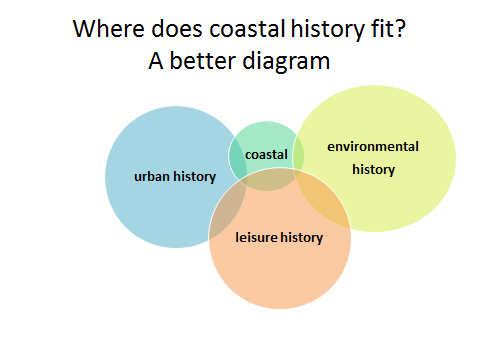I’m absolutely delighted that the second post for ‘Firths and Fjords’ is a guest blog by Professor Isaac Land of the Department of History, Indiana State University. Isaac was one of our keynote speakers at the Dornoch conference, giving a presentation which was ‘inspiring’, ‘outstanding’ and ‘put everything into context’ to quote the words of several attendees. As well as being author of War, Nationalism, and the British Sailor, 1750-1850 (2009), Isaac takes responsibility, in a 2007 article, for introducing the term ‘New Coastal History’ to history writing (see footnote one below for a full reference). This article ignited the ‘Coastal History’ debate that has proved so engaging and intriguing ever since. Isaac also runs The Coastal History Blog. I recommend it to all of you, along with his Twitter account (@IsaacLand2) as public history which is suitably challenging while being global and inclusive in its scope, reach and appeal. Best wishes, David

A number of scholars from quite varied backgrounds have independently been feeling their way toward coastal history in recent years. I was the first to use the term as such in “Tidal Waves: The New Coastal History,” but unbeknownst to me, Michael Pearson’s “Littoral Societies: The Concept and the Problems” had appeared in the Journal of World History just six months before.[1] John Gillis’ The Human Shore brought a coastal approach to wider attention. As a fierce advocate for coastal environmental issues, he would go on to receive a profile in the Chronicle of Higher Ed and write op-ed pieces for the New York Times.
Gillis quoted a Swedish proverb about people with “one boot in the boat, one boot on shore,” and this captures the spirit of the coastal endeavor. It is helpful, at the outset, to point out that many—I would argue, most—of the coastal history topics are watery, but do not actually overlap with the concerns or methods favored by naval or maritime historians.

The three of us (Land, Pearson, and Gillis) had something in common: we, ourselves, had one boot on each side of the historiographical divide. We looked to the coast to address research questions that did not necessarily originate at sea. If the coast is the centre of the inquiry, we enter a different intellectual “neighborhood.”

This second diagram illustrates two of my favorite points. First, many people are already doing coastal history without knowing it (and consider the gigantic circles that are missing from this diagram, such as gender history!). Second, a correctly-worded call for papers could easily summon a hundred people (on average) to an annual international conference. It just requires that a small percentage of scholars in each of these very large “cognate” fields have some interest in watery topics. A coastal history conference is the natural home base for a number of topics that might look quirky, tangential, or “unmarketable” in another academic setting.
I believe Louise Moon’s dissertation has the distinction of being the first to openly affiliate with coastal history. I write about historians because I know them best. Yet, of course, the Firths and Fjords conference attracted many archaeologists, and I noticed a strong affinity for cultural geography in many of the papers. It’s worth noticing the spectrum of disciplines beyond History with “coastal studies” potential—or which may be getting there ahead of us! Here, for example, is Rebecca Shores, PhD candidate in English and Comp Lit, blogging about the soundscapes of the island-dwelling hermit-saints Cuthbert and Guthlac. Anthropologist-turned-marine biologist María Early Capistrán offers a longue durée history of the human relationship with sea turtles off the Mexican coast. Not long ago I had the pleasure of meeting Soledad Álvarez Martínez and Laura Mier Valerón, two art historians who have applied their special skill set to the urban planning (and glamorous travel posters) of Spanish beach towns in the Franco era. In my keynote, I referenced the work of Fiona Handyside (French and film studies) and David Jarratt (tourism studies).
Someone has quipped that starting a new subfield is as difficult as getting a new sport into the Olympic Games. After the roller coaster of the 1990s, some will resist any new term simply because they’re exhausted with new terms (and methodological “turns”).
Yet in this area, scholars have been shy about inventing useful labels, or promoting them. Greg Dening’s work, and Alain Corbin’s, appeared perhaps too self-contained to inspire a dialogue and a dynamic subfield. Gérard Le Bouedec published on littoral societies and the paramaritime, but mostly in French, and in journals focused on regional, Breton history. I have tried to introduce some new terms and debatable, “usefully wrong” propositions in “Doing Urban History in the Coastal Zone,” but this will only appear in print this year.[2]
In short: why is there a need for a new coastal history? Because there was never an old coastal history. I continue to run into fresh evidence of this. Recently, I read a dozen academic books about “cosmopolitan port towns,” none of which cited each other. During the Dornoch conference, I introduced Fiona Handyside and David Jarratt to each other via Twitter. The fact that both of them wrote about the modern beach hadn’t been enough to help them meet on their own.
As I’ve emphasized in this overview, the only way forward is to affiliate and organize. For updates on all this and more, please follow The Coastal History Blog.
[1] Isaac Land, “Tidal Waves: The New Coastal History.” Journal of Social History 40, no. 3 (Spring 2007), 731–743; Michael Pearson, “Littoral Society: The Concept and the Problems,” Journal of World History 17, no. 4 (2006), 353-373.
[2] It is the final chapter in Brad Beaven, Karl Bell, and Rob James, eds. Port Towns and Urban Cultures (Palgrave Macmillan, 2016).
